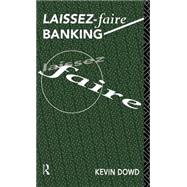- ISBN: 9780415085847 | 0415085845
- Cover: Hardcover
- Copyright: 3/26/1993
The idea of free (or laissez-faire) banking has enjoyed a remarkable renaissance in recent years. It is a radical idea that challenges much of what many monetary and banking scholars still take for granted - that banking is inherently unstable, that the banking system needs a lender of last resort or deposit insurance to defend it in a crisis, and that the government has to protect the value of the currency. Against this free banking sets an argument which is in essence very simple: if markets are generally better at allocating resources than governments, then what is different about money and the industry that provides it and why should they be treated differently?
Laissez-faire Banking is divided into three interrelated sections, dealing with the theory of free banking, historical experiences of it and present-day monetary and banking reforms based on free banking principles. Questions relating to the stability or otherwise of free banking regimes are always paramount, and the practical section discusses various forms of automatic stabilizing mechanisms under free banking. The historical chapters also provide compelling evidence of the ultimate stability of free banking systems as well as discussing how central banking evolved in Britain and the United States and the effects it has had. Finally, the book shows how free banking theory can shed light on important contemporary issues, including European monetary reform, the consequences of a European central bank and the US banking crisis.
Laissez-faire Banking is divided into three interrelated sections, dealing with the theory of free banking, historical experiences of it and present-day monetary and banking reforms based on free banking principles. Questions relating to the stability or otherwise of free banking regimes are always paramount, and the practical section discusses various forms of automatic stabilizing mechanisms under free banking. The historical chapters also provide compelling evidence of the ultimate stability of free banking systems as well as discussing how central banking evolved in Britain and the United States and the effects it has had. Finally, the book shows how free banking theory can shed light on important contemporary issues, including European monetary reform, the consequences of a European central bank and the US banking crisis.






